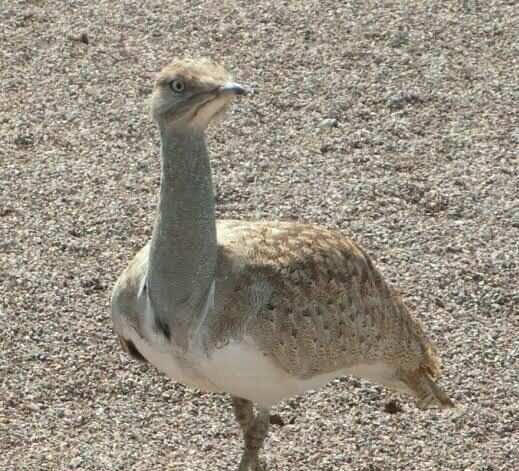Hunting of houbara bustard in Pakistan
Waheeda Marjan
The Houbara Bustards, which is also called Macqueen’s bustard is a migratory bird from Siberia. However, the houbara bustards are under the threat of extinction in Pakistan’s Balochistan province.
According to the International Fund for Houbara Conservation (IFHC), roughly 33,000 Asian houbara bustards are over 22,000 of the North Africa houbara bustard remain today. The estimates are that around 30,000 to 40,000 houbara bustard migrates to Pakistan every year for six months.
Houbara eats plants and insects
A ground-dwelling bird that eats mostly desert plants and insects, it earlier used to travel further south down to the Arabian Peninsula but due to overhunting, it no longer travels beyond Pakistan. After breeding in the spring, the Asian bustard migrates south to spend the winter in Pakistan, the Arabian Peninsula, and nearby and Southwest Asia.
There are many bad effects from poaching, and that’s dander to Houbara, poaching the number of Houbara will still decreasing until extinction, and because of that the countries started to save Houbara and stopped people from poaching because Houbara is endangered.
Government of Pakistan put a ban on hunting of houbara bustard
Now that the Pakistan government has put a permanent ban on the hunting of the Houbara bustard especially for the Arabs. Every season the bird migrates from freezing Siberia to Balochistan, which is why it has become the center of attraction every winter, Saudi and other Arab royal family members come to Pakistan to hunt the houbara bustard in our deserts.
Outrage in media over rampant hunting
This year outrage in the media was louder than before a member of royal Arab families came to Balochistan for the killing of houbara bustard. The royal family members were here for three weeks during the winter season.
Environmentalists and wildlife experts have expressed concern voice over rampant killing of houbara bustard. They termed the hunting a cruel act and called for an end to this rampant killing of an endagered bird.
The author is a student of environmental sciences at the Sardar Bahadur Khan Women University Quetta







1 comment